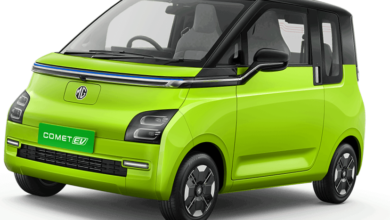
What are the different types of engines?
What are the different types of engines?
In this article, you will learn about the different types of engines used in the automotive industries. Also, you can download the PDF of this article at the end of it.
What is the engine?
An engine is a machine designed to convert one form of energy into mechanical energy. Heat engines such as internal combustion engines burn their fuel inside the engine cylinder.
On the other hand, external combustion engines are those heat engines that burn their fuel outside the engine cylinder.
These are steam engines. The energy developed during the combustion of the fuel is transmitted to steam, which acts on the piston inside the cylinder. In internal combustion engines, chemical energy is stored in their operation.
Thermal energy is converted into mechanical energy by the expansion of gases against the piston attached to the crankshaft that can rotate.
Engine types
Here are the different types of engines :
- Types of fuel used
- gasoline engine
- diesel engine
- gas engine
- According to the operating cycle
- oto cycle engine
- diesel cycle engine
- Dual combustion cycle engine
- Number of strokes per cycle
- Four stroke engine
- two-stroke engine
- Classified by ignition type
- hot spot ignition engine
- spark ignition (SI) engine
- Compression ignition (CI) engine
- number of cylinders
- single cylinder engine
- two cylinder engine
- Three cylinder engine
- Four-cylinder engine
- Six cylinder engine
- Eight cylinder engine
- Twelve cylinder engine
- Sixteen cylinder engine
- Classified by valve arrangement
- L-Head Engine
- I-head motor
- F-head motor
- T . head drive
- Classified by cooling system
- Air cooled engine
- water cooled engine
- evaporative cooling motor
In addition to the above classifications, internal combustion engines are also classified on the following grounds:
- Speed
- low speed motor
- high speed motor
- medium speed motor
- fuel injection method
- carburetor engine
- air injection engine
- Solid or ventilated injection motor
- Judging method:
- Hit and miss the controlled motor
- qualitatively controlled motor
- quantum controlled motor
- Application:
- stationary motor
- Car engine
- locomotive engine
- marine engine
- aircraft engine
Several other types of internal combustion engines are also being proposed for use as automobile power plants. These include
- free piston engine
- Wankel engine
- sterling engine
1. Classification according to the types of fuel used
According to the type of fuel used, engines are classified into three classes
- Gasoline Engine (or Gasoline Engine)
- diesel engine
- gas engine
gasoline engine
A gasoline engine uses gasoline to power it. Gasoline or gasoline is a hydrocarbon composed of hydrogen and carbon compounds. The mixture of air and gasoline is sucked into the cylinder during the suction stroke of the piston. The correct air-gasoline mixture is obtained from the carburetor.
The mixture is compressed during the compression stroke, ignited during the power stroke and exhaust gases are forced out during the exhaust stroke. A spark plug is installed at the top of the cylinder which gives a spark to ignite the mixture.
diesel engine
In these types of engines, diesel oil is used to power it. Diesel oil is light, has low viscosity and a high cetane count. In a diesel engine, only air is sucked into the cylinder during the suction stroke and compressed to high pressure, and the compression ratio is as high as 22:1. Its temperature also rises by about 1,000 degrees Fahrenheit.
Diesel oil is injected by an injector at the end of the compression stroke which catches fire and burns due to the high temperature of the compressed air. A separate ignition system is not required. The burning gases expand, pushing the piston down during the power stroke, and eventually the gases are pushed out during the exhaust stroke.
gas turbines
Gas turbine mainly consists of two sections – a gasification section and a power section. The fuel used in gas turbines can be gasoline, kerosene or oil. The gas section burns the fuel in the burner and delivers the resulting gas to the power section, where it spins the power turbines. The electric turbine then turns the wheels of the car through a series of gears.
The gasifier consists of a compressor that has a rotor with a series of blades around its outer edge. As the rotor rotates, air is transferred between the blades and thrown by centrifugal force into the burner. Thus, the air pressure in the burner increases. The fuel is injected into the burner where it burns and the pressure is increased.
2. Classification according to the cycle of operations
According to the cycle of operations, automobile engines may be of the following three types:
- Otto cycle engine.
- Diesel cycle engine.
- Dual cycle motor.
Otto cycle or constant volume cycle
Otto cycle or constant volume cycle. This cycle was practically introduced by the German scientist Otto, in 1876, although the French scientist Beaud Roche described it in 1862. Engines running on this cycle are known as Otto engines. Gasoline engines operate in this cycle.
The motor IC does not undergo cyclic change but here it is assumed that the working medium is pure air that does not undergo any chemical change. The air is simply heated and cooled to undergo a cycle. It is also assumed that the perfect indicator chart is followed meticulously.
| An ideal Otto cycle consists of the following processes |
| 1-2 adiabatic pressure. 2-3 Add constant volume heat. 3-4 adiabatic expansion. 4 1 Constant volume heat expulsion. |
Diesel cycle or constant pressure cycle
The diesel cycle was introduced by Dr. Rudolf Diesel in the year 1897. Engines running in this cycle are known as diesel engines. The figure shows the pv diagram of the diesel cycle.
| It consists of the following operations: |
| 1-2 adiabatic pressure. 2-3 Addition of heat at constant pressure 3-4 adiabatic expansion. 4-1 Exhaust heat at a constant volume |
The diesel cycle differs from the Otto cycle in one respect. In the diesel cycle, heat is added at a constant pressure rather than a constant volume.
The air in the cylinder is compressed during the compression stroke from point 1 to 2. Now heat is added at a constant pressure from point 2 to 3, then the air is adiabaticly expanded from point 3 to point 4. Finally, heat is rejected at a constant volume of point 4 to 1. The air returns to its original state and the cycle is completed.
double cycle (or double combustion cycle)
In these types of engines, more time is allowed for the fuel to burn in the diesel engine without negatively affecting efficiency.
Fuel is injected into the cylinder before the end of the compression stroke so that combustion continues partly at a constant volume and partly at a constant pressure. This cycle is known as the dual cycle. In fact, all diesel engines are already running in this cycle. The figure shows the double cycle on the pv graph.
| It consists of the following operations. |
| 1-2. Adiabatic pressure 2-3. Add 3-4 constant volume heat . Add heat at constant pressure 4-5. Adiabatic expansion 5-1. Heat rejection at constant volume. |
Since the fuel is injected into the cylinder before the end of the compression stroke of the dual cycle, it takes care of the ignition retardation characteristics of the fuel.
3. Classification by number of strokes per cycle
According to the number of strokes per revolution, automobile engines are classified as
- Four-stroke engine.
- Two-stroke engine.
Four stroke engine
The four-stroke completes a cycle of operations during the four-piston stroke, namely suction, compression, power and exhaust. These four strokes require two revolutions of the crankshaft. Thus, during every two revolutions of the crankshaft, there is only one electric stroke of the piston.
two-stroke engine
The two-stroke engine completes a cycle of operations during two piston strokes. These two strokes require one revolution of the crankshaft. Thus, during each revolution of the crankshaft, there is one stroke of force for the piston. Therefore, a two-stroke engine produces twice as much horsepower as a four-stroke engine of the same size, and operates at the same speed.
In a two-stroke engine, the intake and compression strokes, and the power and exhaust strokes are combined. Two-stroke engines are used in motorcycles and scooters. Four-stroke engines are used in cars, trucks, and buses.
4. Classification by ignition type
According to the type of ignition used, modern car engines are mainly classified into two groups:
- Spark ignition engines.
- Compression ignition engines.
spark ignition engine
In a spark ignition engine, a spark plug is installed in the cylinder head which gives an electric spark at the end of the compression stroke to ignite the fuel. Gasoline engines are spark ignition engines.
compression ignition engine
In these types of engines, the fuel is ignited by the heat of compressed air inside the cylinder. There is no spark in it to give a spark. The air in the cylinder during the compression stroke is compressed relatively at a higher pressure.
The compression ratio is also higher than that of a spark ignition engine. Fuel is injected at the end of the compression stroke , which burns due to the heat of the compressed air. Diesel engines are compression ignition engines. Hot spot ignition engines are practically not used.
5. Classification according to the number and arrangement of cylinders
Car engines may have one, two, three, four, six, eight, twelve and sixteen cylinders. A single cylinder engine is used in scooters and motorcycles. The two-cylinder engine is used in tractors. Four and six cylinder engines are used in cars, jeeps, buses and trucks.
Comet truck and bus have six cylinder engines. American passenger cars have eight-cylinder engines. Twelve and sixteen cylinder engines are also used in some passenger cars, buses, trucks, and industrial plants. The three-cylinder engine is also used in foreign front-wheel drive cars.
The cylinders can be arranged in several ways – vertical, horizontal, cascading (inline), in two rows or banks set at an angle (V type), in two opposite rows (flat, pancake) or like spokes on a wheel (radial).
single cylinder engine
These types of engines are generally used for light vehicles such as scooters and motorcycles. The maximum volume of a single-cylinder engine is limited to about 250-300 cc. Higher engine size will require heavier engines due to higher unbalance forces in a single cylinder engine.
In one cylinder there is one pulse of energy in two revolutions of the crankshaft. Thus, among the four strokes of the pistons, energy is delivered in one stroke and in the remaining strokes of the pistons, energy is consumed to overcome the frictional resistance of the moving parts. Torque distribution during the cycle is uneven resulting in rough work and vibrations.
Since there is one piston and one connecting rod reciprocating with no working parts to balance their weight, a single cylinder engine has no mechanical balance. However, the engine is more or less balanced using the counterweight attached to the crankshaft, and also by using a heavy flywheel so that its momentum produces a relatively constant motion.
Fluctuations in engine speed cause vibration, even in the best designs of single-cylinder engines. Hence, single cylinder engines are not desirable for use in automobiles.
Two-cylinder engine.
These types of engines are mostly used in tractors. It is also used in small German cars and the Daf from Holland. The cylinder arrangement in two-cylinder engines may be of three types
- vertical type in line
- V type.
- corresponding type
Three cylinder engine
The three-cylinder engine is used in a front-wheel drive car, in which the differential is located between the engine and transmission. The three cylinders are placed in line. This is a two-stroke cycle engine. The crankcase in this engine acts as an intake and pre-compression chamber.
Each cylinder has a closed section of the crankcase. Thus, the main bearings supporting the crankshaft are of a stamped type, so that the crankcase is divided into three separate compartments, one for each cylinder.
four cylinder engine
Four-cylinder engines are mostly used for regular cars. The torque obtained is more uniform compared to a two-cylinder engine because two working strokes are obtained per revolution.
The cylinders of a four-cylinder engine are arranged as follows:
- vertical type in line
- V type.
- corresponding type
Six-cylinder and eight-cylinder engine
The six- and eight-cylinder engines provide smoother torque and higher horsepower. The cylinders of these engines are also arranged three ways in-line, V and the corresponding type, in the same way as in four-cylinder engines. In-line 6-cylinder V-8 engines are used almost universally. The angle between the rows of cylinders in V-8 engines is usually 90 degrees.
V-8 engines are also made with smaller V angles, but the valve actuation mechanism is complicated in them. V-6 engines have two rows of three cylinders set at an angle to each other. The crankshaft has only three cranks, with connecting rods of opposite cylinders in the two rows attached to the crankshaft. Each crankshaft has two rods attached to it.
The V-8 has two rows of four cylinders that are set at an angle to each other. The crankshafts have four arms with connecting rods of opposite cylinders in the two rows connected by a single crank screw. Thus, two rods are attached to each crank pin, and two pistons operate on each crankshaft. The crankshaft is usually supported on five bearings.
Twelve and sixteen cylinder engines.
The cylinder arrangement in twelve and sixteen cylinder engines may be of the following types
- V type or pancake type has two rows of cylinders.
- Type W has three rows of cylinders.
- Type X has four rows of cylinders.
Twelve and sixteen cylinder engines were used in cars and buses. Trucks and industrial plants. The only passenger car now built with a twelve-cylinder engine is the Ferrari.
7. Classification by valve arrangements
Automobile engines are classified into four classes according to the arrangement of the intake and exhaust valves at different positions in the cylinder head of the block. These arrangements are called “L” TF and T. The word “LIFT” is easy to remember to call the four valve arrangements. The I-head design is commonly used in automobile engines.
I-head motor
In an I-head or overhead valve engine, the valves are located in the cylinder head. In-line engines usually have the valves in a row. V-8 engines may have the valves in a single row or in a double row on each bank. Regardless of the arrangement, one camshaft drives all valves.
L-Head Engine
In the L-head arrangement, the inlet and exhaust valves are located side by side and are driven by a single camshaft. The combustion chamber and cylinder of the inverted L. All engine valves are arranged in one line, except for the V-8 L-head engines, where they are in two lines.
In L-head engines, the valve mechanisms are located in the block and so the cylinder head can be easily removed when the engine needs to be repaired. Although the L-head motor is durable and reliable, it is not particularly adapted to high pressure.
The head first valve drive is more adaptable to the higher compression ratio. In a I-head valve engine, the clearance can be reduced to a larger amount than in a L-head engine. In some I-head engines, there are pockets in the piston heads in which the valve can move when the piston is open at TDC
F-head motor
This engine is a mixture of L-head and I-head engines, where there is usually one valve in the head and the exhaust valve is in the cylinder block. Both groups are driven from the same camshaft.
T . head drive
A T-shaped engine has inlet valves on one side and exhaust valves on the other side of the cylinder. Thus, two camshafts are required to operate it.
7. Classification by cooling type
According to the type of cooling method, automobile engines are mainly classified into two categories:
- Air cooled engines.
- Water cooled engines.
Air Cooled Engines
Air-cooled engines are used in motorcycles and scooters. In air-cooled engines, cylinder drums are usually separate and equipped with metal fins that give a large radiating surface to increase the cooling rate.
Many air-cooled engines are equipped with metal housings that direct airflow around the cylinders to improve cooling. Since these motors do not use water, the problem of cold weather maintenance is eliminated.
water cooled engines
These types of engines are used in buses, trucks, cars, and other heavy-duty four-wheeled motor vehicles. These engines use water, with an anti-freeze compound added to act as the cooling medium.
Water is accounted for by water jackets around each combustion chamber, cylinders, valve seats and valve stems. After passing through the engine jackets in the block and cylinder head, water is passed through the radiator, where it is cooled by air drawn through the radiator.
Evaporative cooling engines are practically not used.



